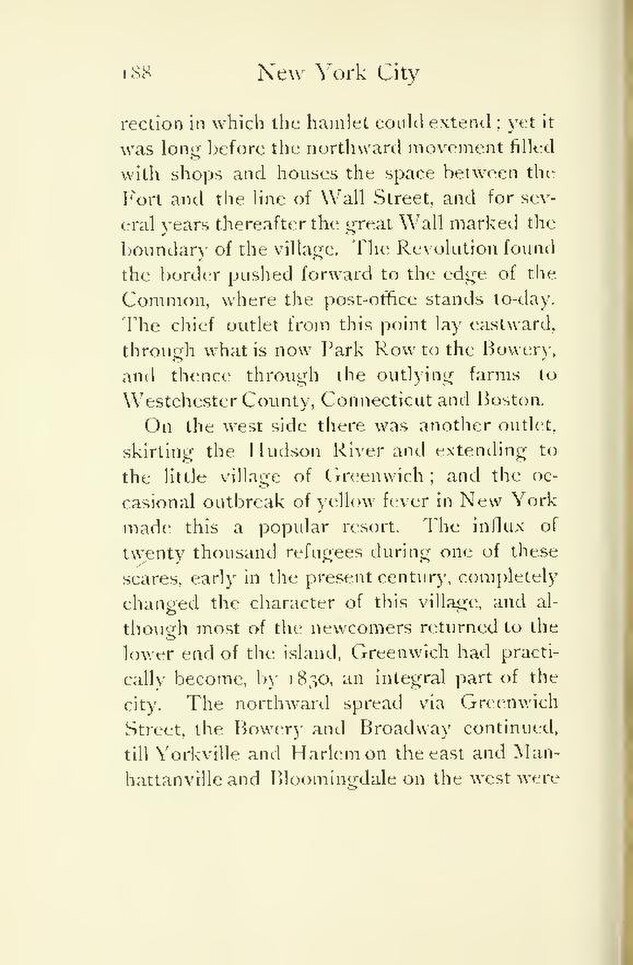- rection in which the hamlet could extend; yet it
was long before the northward movement filled with shops and houses the space between the Fort and the line of Wall Street, and for several years thereafter the great Wall marked the boundary of the village. The Revolution found the border pushed forward to the edge of the Common, where the post-office stands to-day. The chief outlet from this point lay eastward, through what is now Park Row to the Bowery, and thence through the outlying farms to Westchester County, Connecticut and Boston.
On the west side there was another outlet, skirting the Hudson River and extending to the little village of Greenwich; and the occasional outbreak of yellow fever in New York made this a popular resort. The influx of twenty thousand refugees during one of these scares, early in the present century, completely changed the character of this village, and although most of the newcomers returned to the lower end of the island, Greenwich had practically become, by 1830, an integral part of the city. The northward spread via Greenwich Street, the Bowery and Broadway continued, till Yorkville and Harlem on the east and Manhattanville and Bloomingdale on the west were
